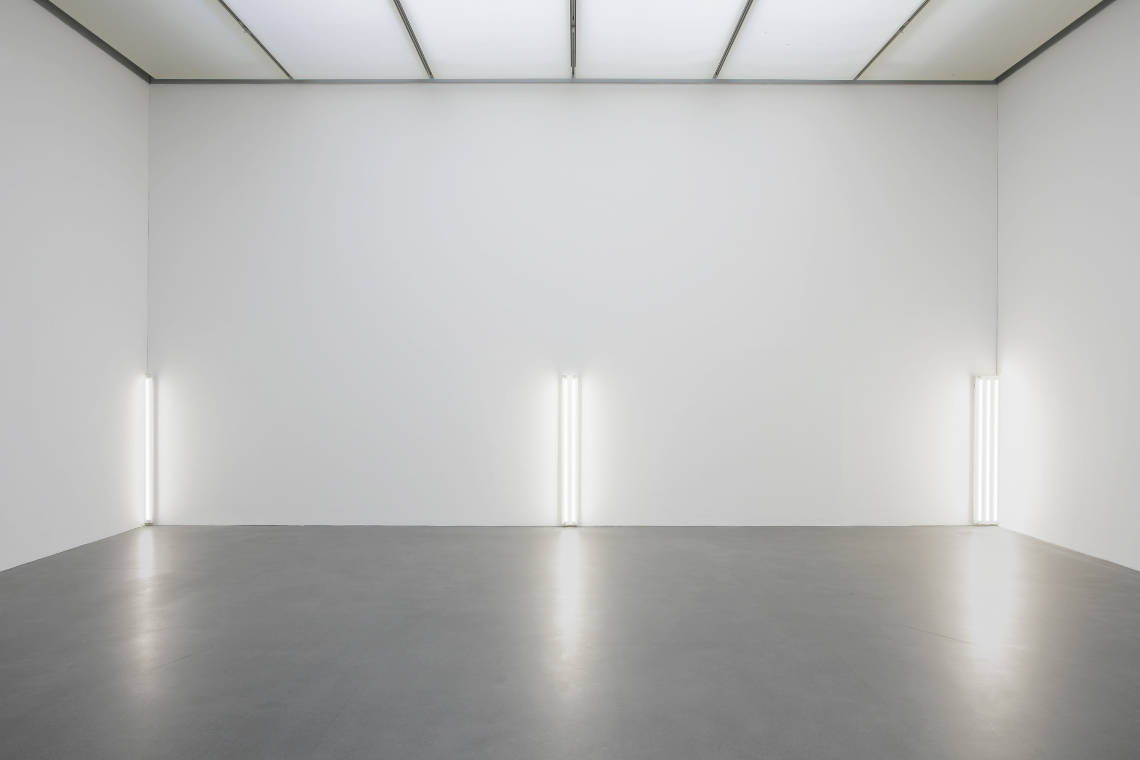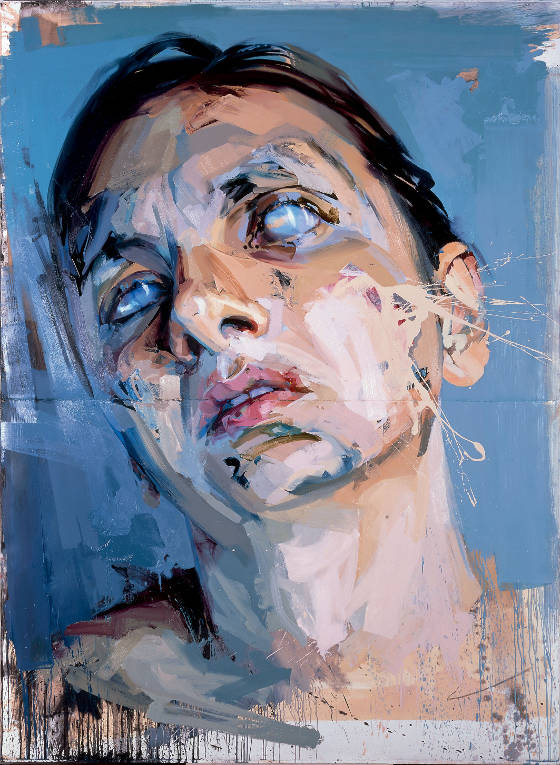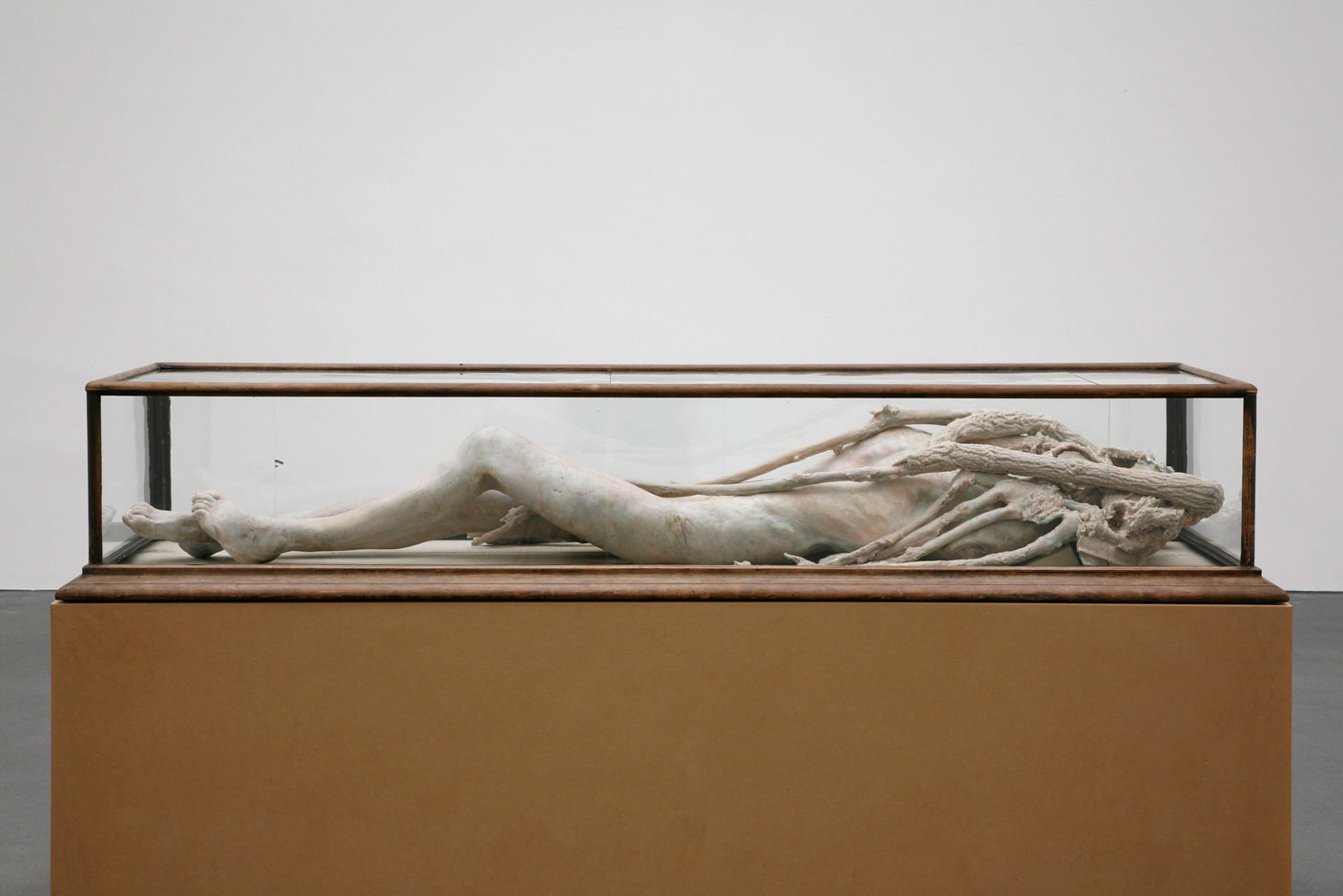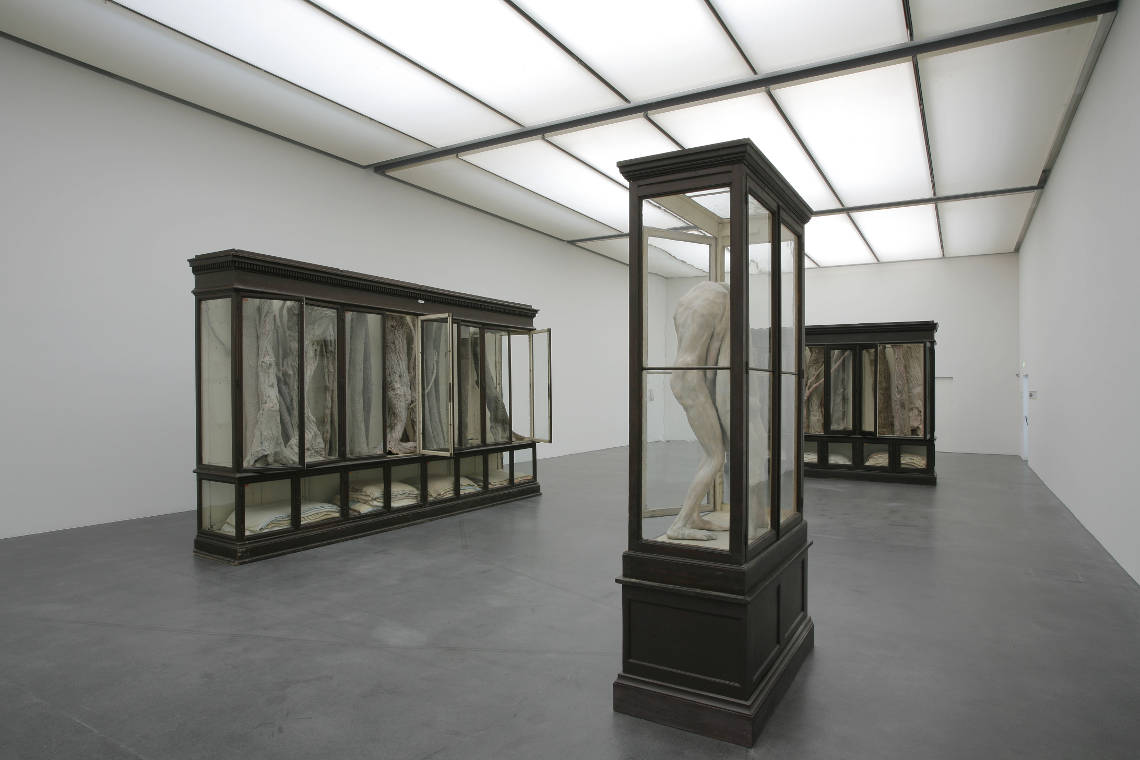Berlinde de Bruyckere, Jenny Saville, Dan Flavin
The common interest in themes such as pain, suffering, disability, guilt and atonement makes the combination of works by the Belgian sculptor Berlinde De Bruyckere and the British painter Jenny Saville not only comprehensible but actually quite obvious. However different their artistic materials and techniques – sculpture and painting – might at first appear to be, the two artists establish contact in their individual formulations. The collaged ground in Jenny Saville’s paintings not only makes apparent the object-like qualities of her painting, but assimilates them to Berlinde De Bruyckere’s technique of fragmentation, familiar to us from her horse torsos, and also apparent in her hermaphroditic wax figures. Conversely, however, the element of painting is an absolutely central factor in the achievement of the delicate surface structure of De Bruyckere’s wax sculptures.
Berlinde de Bruyckere (b. 1964, lives and works in Ghent) will install recent works in the large exhibition hall. The wax sculptures of tree trunks on display in monumental vitrines close the circle with the variety of natural forms – animal, human and now plant – that run through De Bruyckere’s work.
Jenny Saville (b. 1970, lives and works in London und Palermo) will be represented by the large-format triptych Atonement Studies, 2005–6. Along with another brand new painting, this work uses the depiction of physical disability to throw up questions of the integrity of the human body.
A key work by Dan Flavin (1933-1996), the American pioneer of Minimal Art, The Nominal Three (to William of Ockham), 1963, completes the triad – albeit on a less obvious level – and acts as an indispensable hinge between the other two. The meditative light installation, based on a mathematical principle and installed in the central space, balances the two violent and aesthetically conflicting positions of De Bruyckere and Saville. At the same time it makes clear the sacral character of all three rooms. The form of the triptych plays an important part in this.
On another level the combination of sculpture, painting and an actually immaterial installation brings to the fore the very different capacities of the various artistic genres to generate meaning, and thus also opens up a theoretical debate concerning media and representation.
Finally, the exhibition Berlinde De Bruyckere, Jenny Saville, Dan Flavin corresponds splendidly with the Summer exhibition Vis-à-vis. Bacon & Picasso, in that De Bruyckere and Saville address concerns that Picasso and mainly Bacon have also investigated, and develop these further in a contemporary artistic language. Chief among these are the question of the fragmentation of the body and its display, sometimes bordering on ruthlessness in such a way that it inevitably calls to mind depictions from Christian iconography.
curated by Peter Fischer



